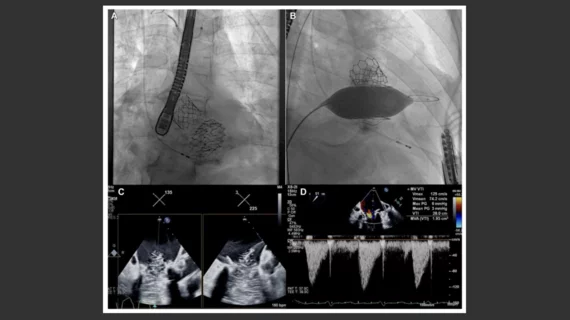How intravascular lithotripsy can improve TMVR outcomes
Intravascular lithotripsy (IVL) may offer substantial value to clinicians performing transcatheter mitral valve replacement (TMVR) on patients with severe stenosis and mitral regurgitation (MR), according to new findings published in the Journal of the Society for Cardiovascular Angiography and Interventions.[1]
IVL, an FDA-cleared technology developed by Shockwave Medical in 2009, uses sonic pressure waves to breakup calcified lesions in patients presenting with coronary artery disease or peripheral artery disease.
When treating an 83-year-old patient who had already undergone transcatheter aortic valve replacement (TAVR) for aortic stenosis, clinicians used Shockwave’s IVL solution on the mitral annulus prior to TMVR. The patient was being treated as part of the APOLLO trial, an investigation of Medtronic’s Intrepid TMVR system in patients with severe MR. A cerebral protection device was used both during IVL and TMVR.
“Our team used IVL to modify this severely calcified mitral annulus and valve leaflets to facilitate expansion of the Intrepid self-expanding valve,” lead author Dean Kereiakes, MD, medical director of The Christ Hospital Heart and Vascular Center in Cincinnati and a professor of clinical medicine at Ohio State University, said in a prepared statement. “This type of patient is often turned down for catheter-based therapies.”
Medical imaging performed following the procedure and after 30 days confirmed the group’s efforts were a success, identifying “progressive valve frame expansion in the anteroposterior dimension, increased valve area, and resolution of MR.” However, Kereiakes et al. were clear that much more research on this topic is still required before any recommendations can be made about IVL-assisted TMVR as a long-term treatment option.
“Although anecdotal, this case will hopefully prompt a larger-scale evaluation of IVL-facilitated TMVR in severe mitral annular calcification/mitral valve leaflet calcification and pan-cerebral embolic protection,” the authors wrote. “Further clinical research is required before IVL can be a routine adjunct to TMVR.”

